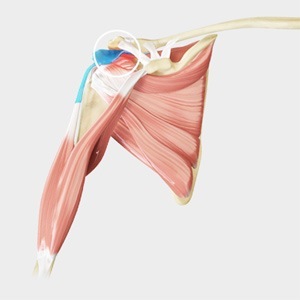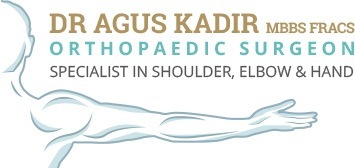Arthroscopic Decompression

A subacromial decompression is a surgery performed for patients with shoulder impingement. Impingement is one of the most common causes of pain in the shoulder. It results from pressure on the rotator cuff from part of the shoulder blade (scapula) as the arm is raised to the shoulder height. The pain may be due to a “bursitis” or inflammation of the bursa overlying the rotator cuff or a “tendonitis” of the cuff itself. In some cases, a partial tear of the rotator cuff may cause impingement pain.
However, if after a course of conservative treatment, consisting of anti-inflammatory medication and physical therapy, your symptoms do not improve; arthroscopic subacromial decompression may be recommended by your surgeon. It is performed under local or general anaesthesia to create more room for the rotator cuff tendons. Subacromial decompression, also known as acromioplasty can be performed with an arthroscope or with an open technique (larger incision). In an arthroscopic procedure, two or three small incisions, called portals are made around your shoulder. Through one portal, the arthroscope is inserted to view the shoulder joint. Utilizing an arthroscope and video camera, the doctor visualizes the structures inside the shoulder. Your surgeon can look for any pathology or anomaly. During the procedure the front (anterior) edge of the acromion (bony prominence at the top of the shoulder blade) is removed along with some of the bursal tissue and last four or five millimetres of the clavicle to increase subacromial space for the rotator cuff tendons. After treating the problem, the incisions (portals) are closed with sutures.
Following surgery, you may have mild pain in the arm for about a week and your arm may be placed in a sling for a short period of time for early healing. A rehabilitation program that includes exercises to regain range of motion of the shoulder and strength of the arm may be recommended.
Risks and complications following surgery may include infection, phlebitis (blood clots of a vein), excessive swelling or bleeding, damage to blood vessels or nerves, and instrument breakage. These complications occur in far less than 1 percent of all arthroscopic procedures.
Click on the topics below to find out more from the orthopaedic connection website of American Academy of Orthopaedic Surgeons.
- The Shoulder
- Arthritis of the Shoulder
- Broken Collarbone
- Dislocated Shoulder
- Fracture of the shoulder blade (scapula)
- Frozen Shoulder
- Rotator Cuff Tears
- Separated Shoulder
- Shoulder Impingement (Bursitis, Tendinitis)
- Shoulder Joint Replacement
- Shoulder Joint Tear (Glenoid Labrum Tear)
- Thoracic outlet syndrome
- Shoulder Arthroscopy

 Menu
Menu






